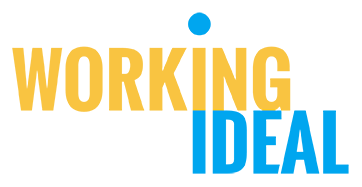Working IDEAL: 2020-2021 in Review
Looking back over the past two years, our team at Working IDEAL has navigated a global pandemic and seen a new sense of urgency around our work for racial justice and workplace equity. As we wrote in the summer of 2020, we support the call to dismantle systemic racism and over the last year we have acted on our belief that a just and inclusive workplace is essential to sustain our democracy.
In this post, we share some highlights of how our clients are engaging on racial equity & global DEIJ across the public, private, and nonprofit sectors. Indeed many of them had already started this journey before July of 2020. In these first months of 2022, we see newly empowered workers and labor movements, new understandings around workplace safety, flexibility and economic justice, and opportunities to innovate to better serve workers, missions, customers and society. We encourage companies, nonprofits and government agencies to continue this work.
Strengthening DEI in Local Governments. In the summer of 2021, we completed a deep multi-year engagement with the City of Cambridge, Massachusetts, conducting an independent external assessment of recruitment, hiring and promotion through a diversity, equity and inclusion lens. Through a survey of all City employees, analysis of workforce data and interviews and documents, we evaluated the City’s structure, practices, policies, and culture as they relate to fostering a diverse workforce. Our recommendations, which were included in a publicly-available report on our website, included expanding the ability to promote opportunities and connect with a broader pool of talent by strategic outreach, building relationships, strengthening tools and resources, leveraging the current workforce and city residents, and better utilizing technology.
Nonprofit Pay Equity Projects to Align with Mission and Values. One of the signature services Working IDEAL provides is ensuring fair pay and we conduct pay equity analyses for public, private and nonprofit organizations. Since the summer of 2020, and particularly in light of the impact of the pandemic on workers, progressive organizations have sought to raise pay and also ensure their compensation programs align with values of equity and transparency. Over the last 18 months we have completed new compensation policies and structures for a number of national nonprofits, assessing race and gender equity, employee perceptions and experiences, workplace culture and market analysis.
Strengthening Equity and Inclusion in Tech. In 2021, Working IDEAL partnered with Atlassian to provide resources and ideas to improve experiences for Atlassians from underrepresented groups and apply research on increasing equity and inclusion in the tech industry.
#CampaignEquity for Political Workplaces. During the summer and fall of 2020, federal, state and local candidates — and many organizations — built major campaigns to persuade and turnout voters in a critical election, as well as responding on the ground to addressing police brutality, sexual harassment, climate action, and immigrant justice. Working IDEAL collected its experiences advising political and advocacy campaigns and candidates with Redwood Enterprise and the Melanin Collective in the #CampaignEquity handbook (2020). The handbook includes tools and checklists of best practices for campaign workplaces in seeking to achieve seven campaign equity goals — like Great Hires, Pay Equity, and Safe and Inclusive Culture. It’s a useful strategic and tactical guide for ensuring your campaign or organizing workspace lives up to your values. https://www.workingideal.com/news-resources/campaign-equity-toolkit/.
Building Best in Class DEI Programs for Small Businesses.
We work with employers of all sizes, and frequently conduct evaluations and assessments of workplace culture and climate, equity and inclusion. Because our work is customized and includes significant qualitative elements, it can be an effective tool for smaller businesses.
Our assessment methodology uses a consistent approach. We apply a broad lens grounded in social science data collection and analysis, seeking to understand how organizational culture, process, structures and practices relate to outcomes and experiences for different groups in the workplace.
One example of this work is the DEI assessment Working IDEAL conducted in 2021 for Linea Solutions, a consulting firm specializing in pension, health, and insurance markets with offices in Los Angeles, Washington, D.C., and Toronto. This project was led by the company’s internal DEI committee and strongly supported by leadership, two elements that we find can result in more successful projects.
Our review encompassed a quantitative and qualitative analysis of data relating to employee demographics, workplace culture, perceptions and experiences of fairness and equity, and equity in policies and practices — including recruitment, hiring, retention, promotion, career development, and training. Because many employees are consultants embedded in client workspaces, we also explored ways for Linea to provide connection and consistency – an emerging challenge for many workplaces developing stronger remote work policies. We identified strengths, challenges, and opportunities, and we recommended best practices supported by research literature and tailored to the organization. We will proceed with the implementation phase in 2022.
